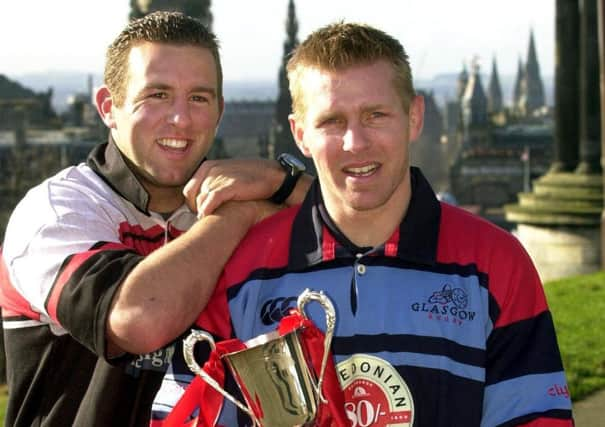1872 Cup: Rugby’s oldest derby fixture


Like many good yarns, including the William Webb Ellis story, that certainly has a degree of truth. There was certainly no cup to be won on the 23 November 1872 at Glasgow Accies ground Burnbank when Scotland’s two largest cities first met under the then 20-a-side Rugby rules.
Two of the Glasgow team, Tom Chalmers and Willie Cross, had an intriguing decision to make that week – should they play against Edinburgh at rugby or play against England in the first-ever soccer international a week later at Hamilton Crescent?
Advertisement
Hide AdAdvertisement
Hide AdThey chose the former so Queens Park took on the Auld Enemy on their own. A year earlier Cross had goaled the first points recorded in the history of international rugby at Raeburn Place in the famous first Scotland v England international.
Between 1872 and 1995 there was still no cup to contest, just the honour of winning, and for generations who played that annual match in early December that sufficed whether it was played at Burnbank, Hamilton Crescent, Hampden Park, New or Old Anniesland or Hughenden in the west.
The first real inter-city cup was contested in the 1995-96 season’s match, when it was donated by the match sponsors, Slater, Hogg and Howison. It had the sponsor’s name on it and that remained for the following season, but for 1997-98 a new sponsor came on board – Inter-City Trains. So it became the Inter-City Cup.
This initiative was very much driven by the Glasgow District Committee of the day, including the likes of Ken Crichton from Stirling County and Andy Little of Glasgow High Kelvinside. By then the Inter-District Championship had become Scotland’s qualifying competition for Europe, and it is intriguing that qualification looks set to return next season.
However, in late March 1998 came the SRU decision to condense from four teams to two for European competition and that sounded the death knell for the Inter-District Cup. Glasgow and Edinburgh played a one-off match in 1998-99 and such was the popularity among supporters that the IDC was resurrected for season 1999-2000. That lasted only three seasons, ending in 2001-2002 and thereafter the Inter-City Cup languished in the Glasgow District office in Somerset Place for a few years.
It found a new life when the professional teams revived it in 2007 and has since become the major draw in the Scottish rugby calendar with crowds of close to 14,000 registered at Murrayfield and limited only to 10,000 in Glasgow, at the old Firhill venue, because of stadia capacity.
Scotstoun housed the 1997-98 fixture and was Glasgow’s first home in the Heineken Cup, though the home matches in the European Challenge Cup the previous season (the four Scottish teams’ first season in Europe) had been played at Hughenden.
What the players of bygone times would make of the international make-up of the current teams filling the jerseys is anybody’s guess but the influx of foreign players was commented on as long ago as 1891 when it was noted that Edinburgh fielded some “aliens”.
Advertisement
Hide AdAdvertisement
Hide AdWhat remains constant is that those who now play in Glasgow and Edinburgh shirts wherever they hail from have the privilege to bear the cities’ names and that is not an honour to be taken lightly.
THE SCOTSMAN RUGBY SHOW IN ASSOCIATION WITH GINGER GROUSE